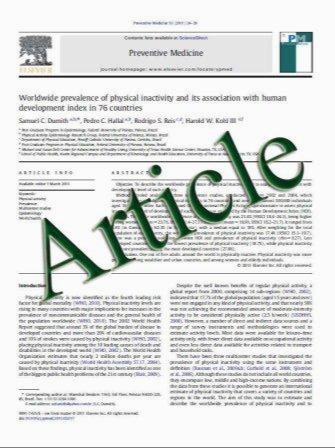Randomized, double-blind comparison of indocyanine green with or without albumin premixing for near-infrared fluorescence imaging of sentinel lymph nodes in breast cancer patients
- نوع فایل : کتاب
- زبان : انگلیسی
- مؤلف : Merlijn Hutteman J. Sven D. Mieog Joost R. van der Vorst Gerrit Jan Liefers Hein Putter Clemens W. G. M. Lo¨wik John V. Frangioni Cornel
- چاپ و سال / کشور: 2011
Description
Near-infrared (NIR) fluorescence imaging has the potential to improve sentinel lymph node (SLN) mapping in breast cancer. Indocyanine green (ICG) is currently the only clinically available fluorophore that can be used for SLN mapping. Preclinically, ICG adsorbed to human serum albumin (ICG:HSA) improves its performance as a lymphatic tracer in some anatomical sites. The benefit of ICG:HSA for SLN mapping of breast cancer has not yet been assessed in a clinical trial. We performed a doubleblind, randomized study to determine if ICG:HSA has advantages over ICG alone. The primary endpoint was the fluorescence brightness, defined as the signal-tobackground ratio (SBR), of identified SLNs. Clinical trial subjects were 18 consecutive breast cancer patients scheduled to undergo SLN biopsy. All patients received standard of care using 99mTechnetium-nanocolloid and patent blue. Patients were randomly assigned to receive 1.6 ml of 500 lM ICG:HSA or ICG that was injected periareolarly directly after patent blue. The Mini-Fluorescence- Assisted Resection and Exploration (Mini-FLARE) imaging system was used for NIR fluorescence detection and quantitation. SLN mapping was successful in all patients. Patient, tumor, and treatment characteristics were equally distributed over the treatment groups. No significant difference was found in SBR between the ICG:HSA group and the ICG alone group (8.4 vs. 11.3, respectively, P = 0.18). In both groups, the average number of detected SLNs was 1.4 ± 0.5 SLNs per patient (P = 0.74). This study shows that there is no direct benefit of premixing ICG with HSA prior to injection for SLN mapping in breast cancer patients, thereby reducing the cost and complexity of the procedure. With these optimized parameters that eliminate the necessity of HSA, larger trials can now be performed to determine patient benefit.
Breast Cancer Res Treat (2011) 127:163–170 DOI 10.1007/s10549-011-1419-0 Received: 23 January 2011 / Accepted: 18 February 2011 / Published online: 1 March 2011 Springer Science+Business Media, LLC. 2011


